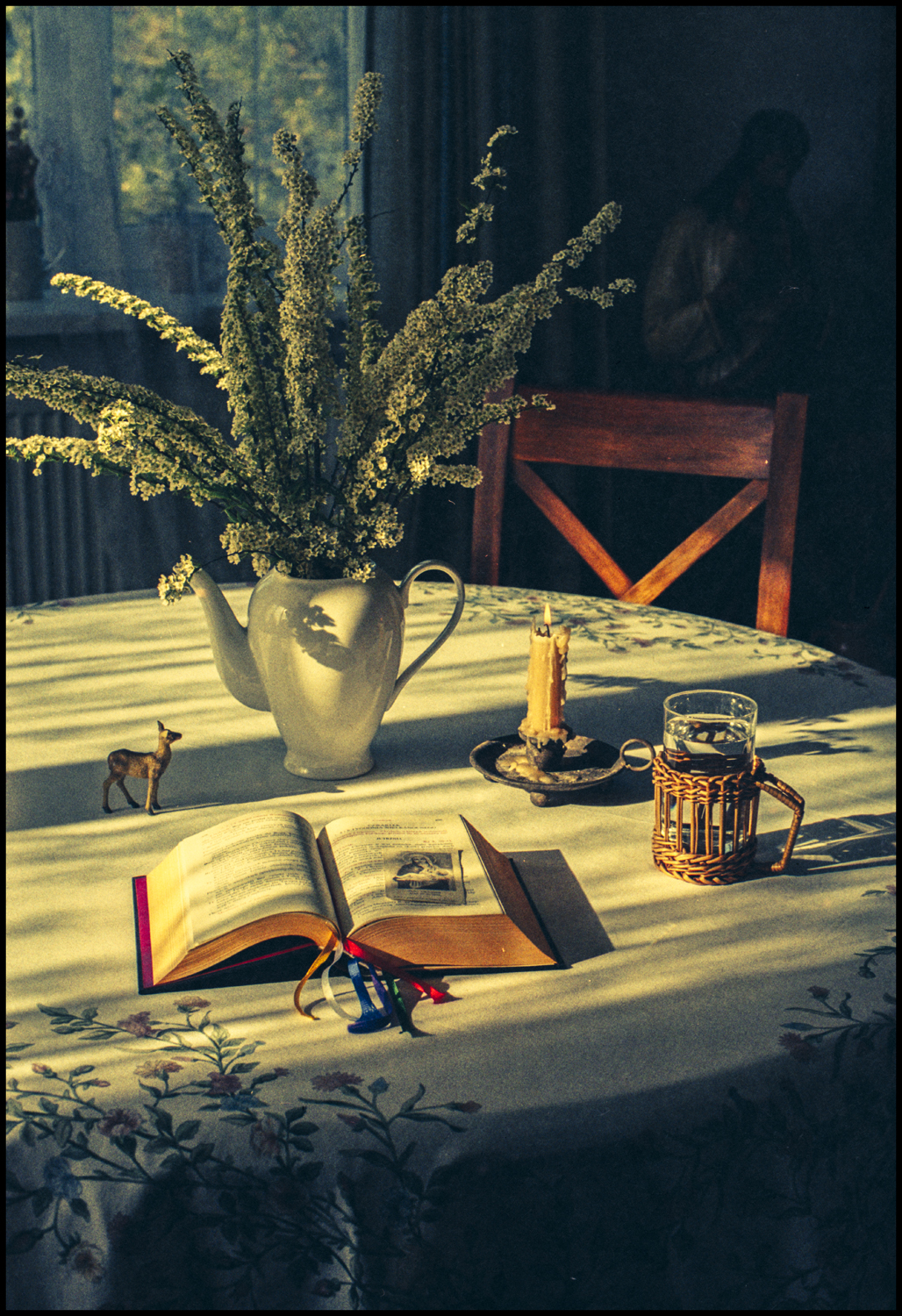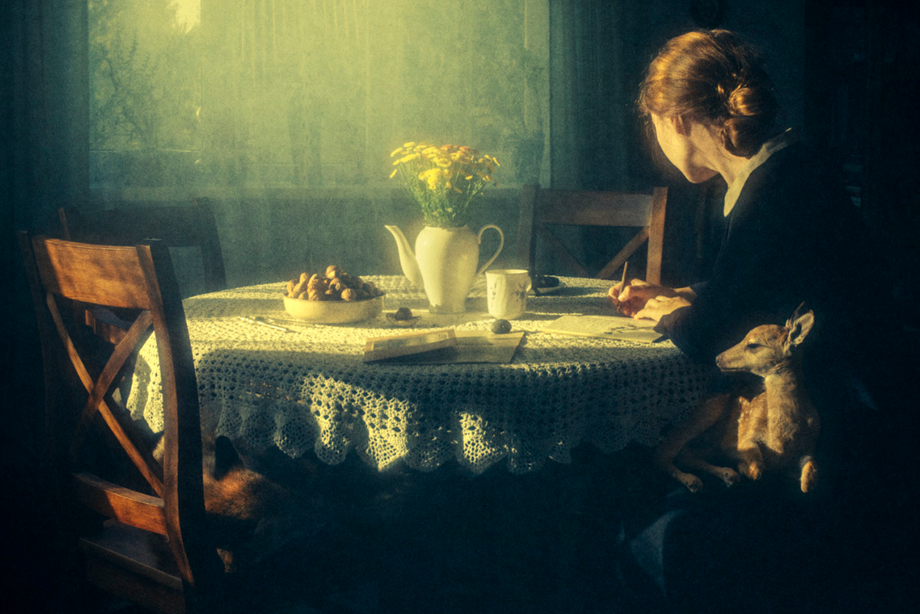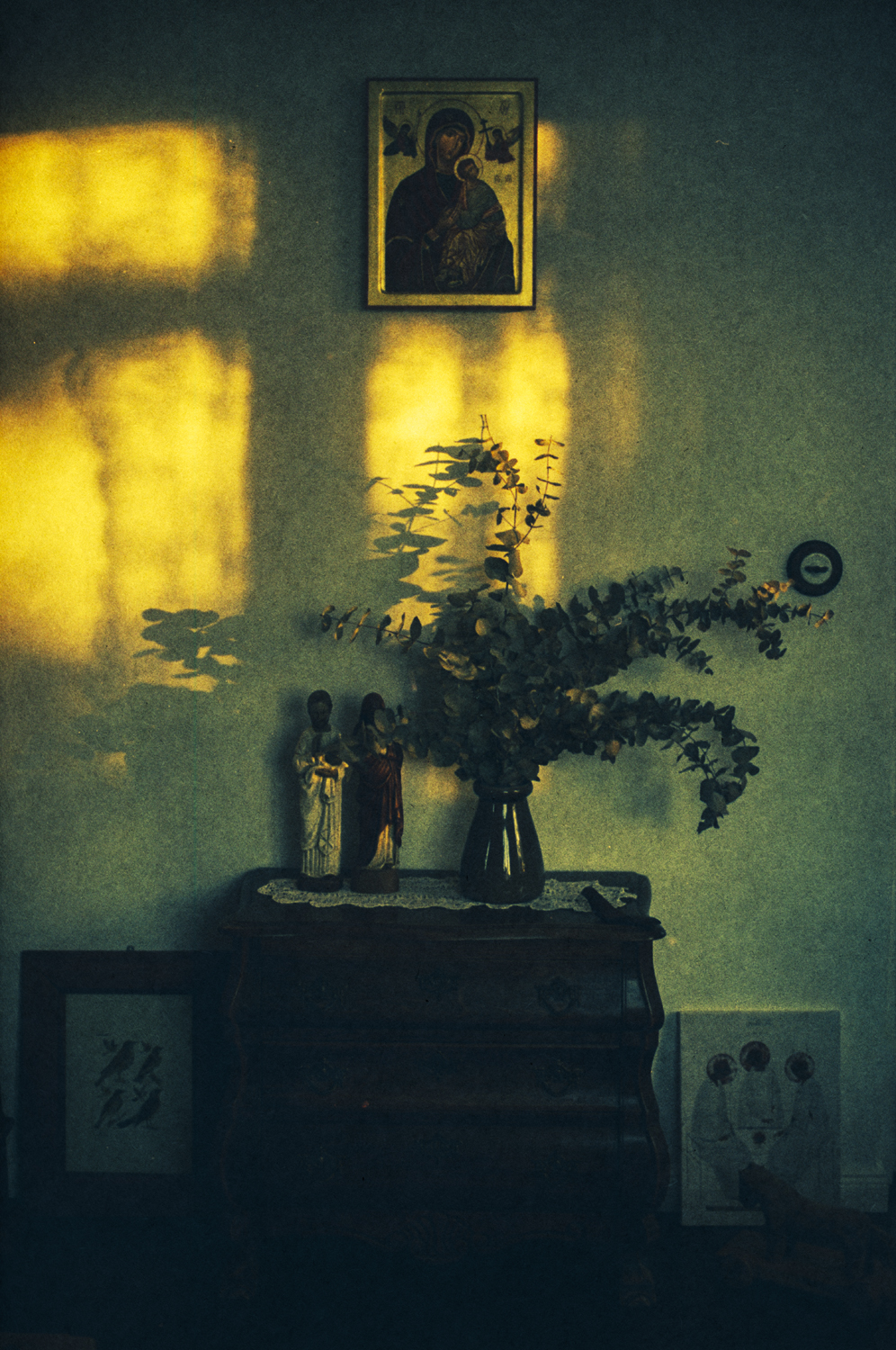b
Laura Makabresku
The nostalgic, saturated, slightly grainy photography of Laura Makabresku calls to mind the highly tactile quality of vintage snapshots and the beautifully composed splendor of Andrei Tarkovsky vignettes. Ordinary yet marvelous household objects, teapots, vases of wildflowers, religious items, candleholders, a bowl of strawberries – a room, steeped in honeyed, sweetly melancholy and golden light, from which the warmth of a remembered family member has just been withdrawn: all these well-worn fragments of a life add up to the ineluctable magic of the beloved everyday. They are visions of a lost yet imperishable past seen through the magnifying haze of memory.


